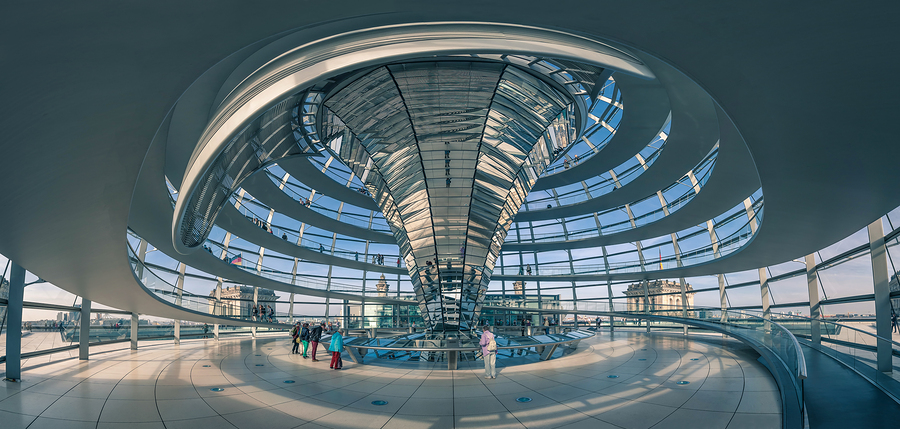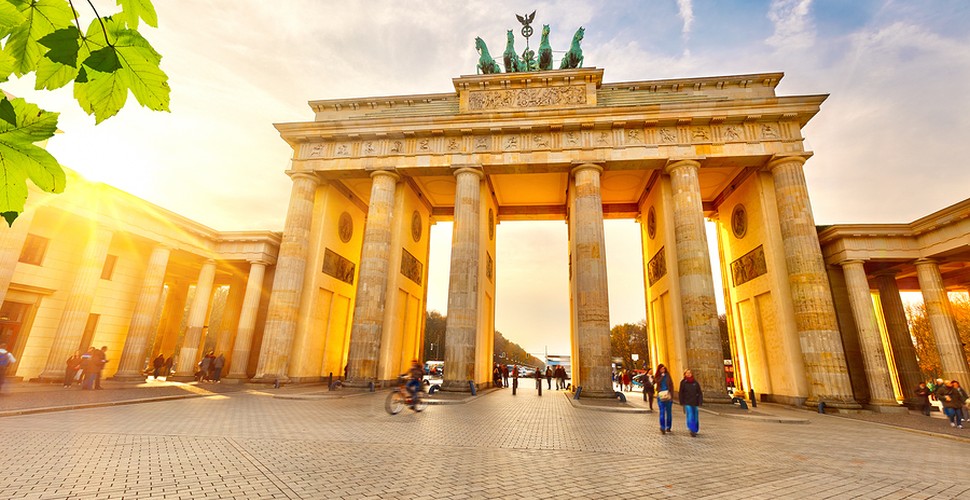Cool Enough for Berlin? From Brandenburg to the Berghain
Berlin has conspicuous gaps in it. And on inspecting the older buildings that often bookend these gaps, you usually find holes. Bullet holes.
World War Two's European theatre drew to its bloody conclusion in Berlin - and it shows. Any structure that survived 1945 bears pockmarks from rifles and machine guns – either from the invading Soviets – or the city's desperate defenders.
After arriving in the futuristic glass-and-metal Berlin Hauptbanhoff (completed 2006), I had the first sense of the gaps in the German capital. The impressive station stood out by itself, surrounded by brownfield sites that awaited good ideas.
Having checked into my hostel I went bullet-hole spotting. Of course, much of Berlin was built in the years after the war, but occasionally you come across an old tenement block that survived the day raids by American Flying Fortresses, the night raids by British Lancasters – and the final onslaught of Russian aviation and artillery.
Chicken Feet
As I walked past one such tenement following a visit to Checkpoint Charlie, a man emerged from a doorway with a bag of something. He suddenly shook the bag into the air and hundreds of chicken feet rose and then fell, spilling across the pavement. Pedestrians stopped and stared. I left the bizarre scene in a hurry and continued my bullet-hole spotting. It must have been some kind of environmental art project, I thought; Berlin was famed as a haven for artists – even ones who liked tossing poultry claws on to public walkways.

Reichstag
A sense of people doing what they want – even if it's tossing chicken feet into the air – permeates Berlin. As I took the U-Bahn to the Bundestag station, I noted that I had not seen a single police man or woman in the city. Later I stood outside the Reichstag gazing up at the immense glass dome, there was a similar sense that the authorities kept their distance from the population – from the outside there were no visible guards or police. After the city's authoritarian past, maybe the locals had had their fill of ‘the man'.
I recalled grainy images of a bombed-out Reichstag in 1945. 70 years on and Germany is a prosperous, modern country – the most powerful in Europe. It has reinvented itself, a fact underlined by the science fiction-like glass dome that now tops this 120-year-old seat of power.
Brandenburg Gate
Near the German Parliament is the most famous symbol of Germany: the Brandenburg Gate. Completed in 1791, the gate was commissioned by King Frederick William II of Prussia as a sign of peace; I recalled an image of Soviet soldiers waving hammer-and-sickle flags over the chariot that sits on the gate, along with other images of rubble piled up around the old pillars, burned-out cars and dead Wehrmacht troops lying next to their national monument.
Today, tourists gathered in the warm sunshine to look up at the beautifully restored gate, enjoying currywurst sausages and French fries.
Holocaust Museum
Wherever you go in Berlin, history is inescapable. It was brave and admirable for the Germans to place the Holocaust Museum so close to the nation's seat of power and the Brandenburg Gate. I stood among the vast matrix of concrete blocks – each rising to a different height. It was oddly moving.
Underneath these immense blocks was the museum itself (free to enter), whose images and artefacts lent a sombre weight to the concrete monoliths above. I came out into the light again and felt quite depressed.
After intersecting the famous Friedrichstraße I arrived at the generously bullet-holed Berliner Dom – certainly one of the most impressive cathedrals I have ever seen.
Israelis' Berlin Holiday
Back in the hostel I met three Israeli travellers, two boys and a girl. The old Fawlty Towers adage “Don't mention the war” echoed around my head. But as it turned out, nobody did mention he war.
Instead, we embraced the new Berlin together. That evening we went for a curry, then found a busy bar that had gas nozzles blasting flames over the tops of the dancing revellers. Out back was a fake beach area, complete with real sand, beach balls and deck chairs.
Berghain
After a few drinks the Israelis told me about a night club called the Berghain. I had never heard of it. They assured me it was quite famous – but very difficult to get into.
There were ‘dark rooms', apparently, where ‘anything goes'. I was intrigued. After my war-focussed day in Berlin, I was keen to get an impression of the capital as it is now.
It took some time to find the correct U-Bahns to the southern sector of the city where the Berghain stood alone, ominous in the dark. The huge dimensions of this former power plant allow the club an 18 metre high dance floor and space for 1,500 guests. It runs continuously from Saturday through to Monday, and once you've got your stamp, you can come and go as you please. It is considered the world capital of techno music by many.
Pushing into the chilly Berlin breeze we walked from Heinrich-Heine Straße U-Bahn towards the pulsing techno music.
It was the longest queue for a nightclub I had ever seen. We stood stamping our feet in the cold and discussing the club's entry requirements with other party-seekers in the line. There were a lot of theories: some said you should be alone, others that being in a group was better. One man said groups of guys often got turned away, but that being with a female was a dead-cert for entry; we had one of those, at least. But then, did they look for unorthodox clothes and hair – or a more conformist look (as we ourselves arguably sported)?
After nearly two hours of inching along the queue, we finally presented ourselves to the shaven-headed bouncers. One, the boss presumably, was perched arrogantly on a stool. He surveyed us with a cold look, casually chewing gum.
“How many?” he asked. This seemed positive.
“Vier”, we said.
There was a pause.
I held up four fingers to clarify – stupidly perhaps.
We waited. The techno music pumped loudly from the entrance, the steam rose from our breaths. We'd almost made it.
Then the bouncer said: “Not tonight, guys.” and waved us away.
Our two hour wait had come to nothing. We were disappointed, of course.
We weren't cool enough for the Berghain!
But still, it was Saturday night in Berlin, and anything could happen…
Get a Quote